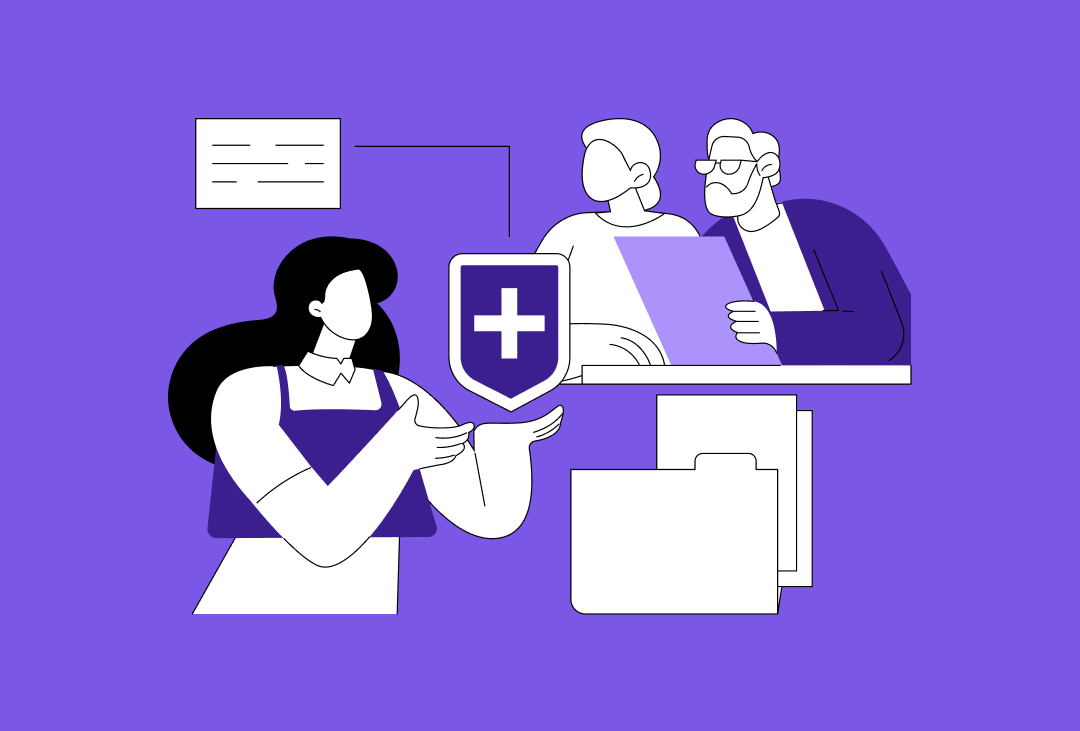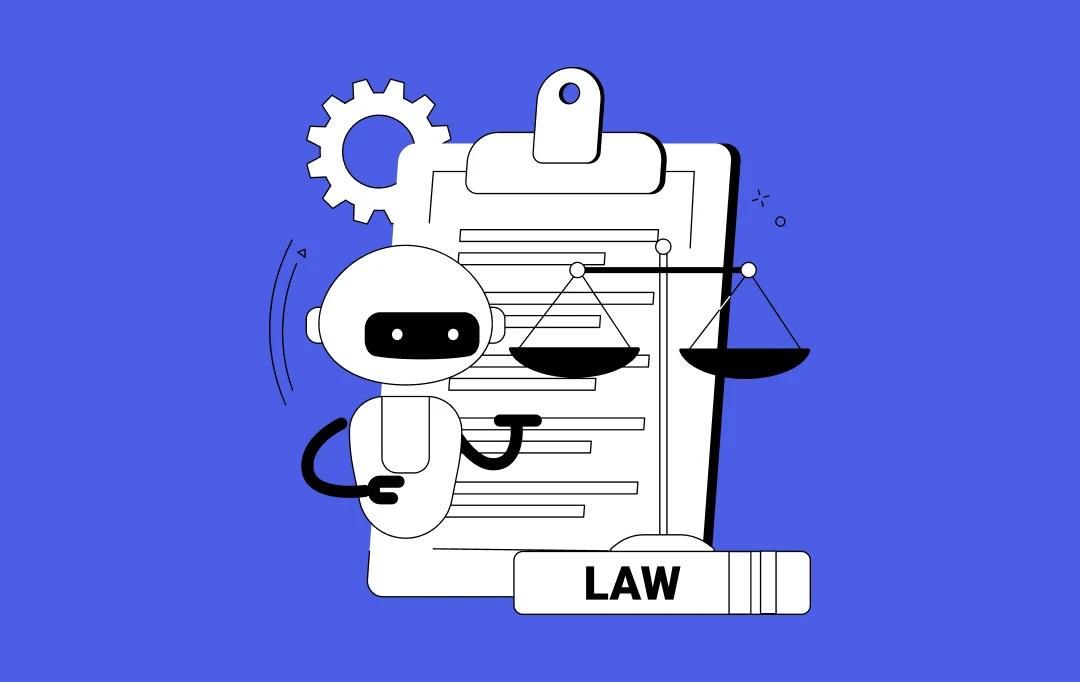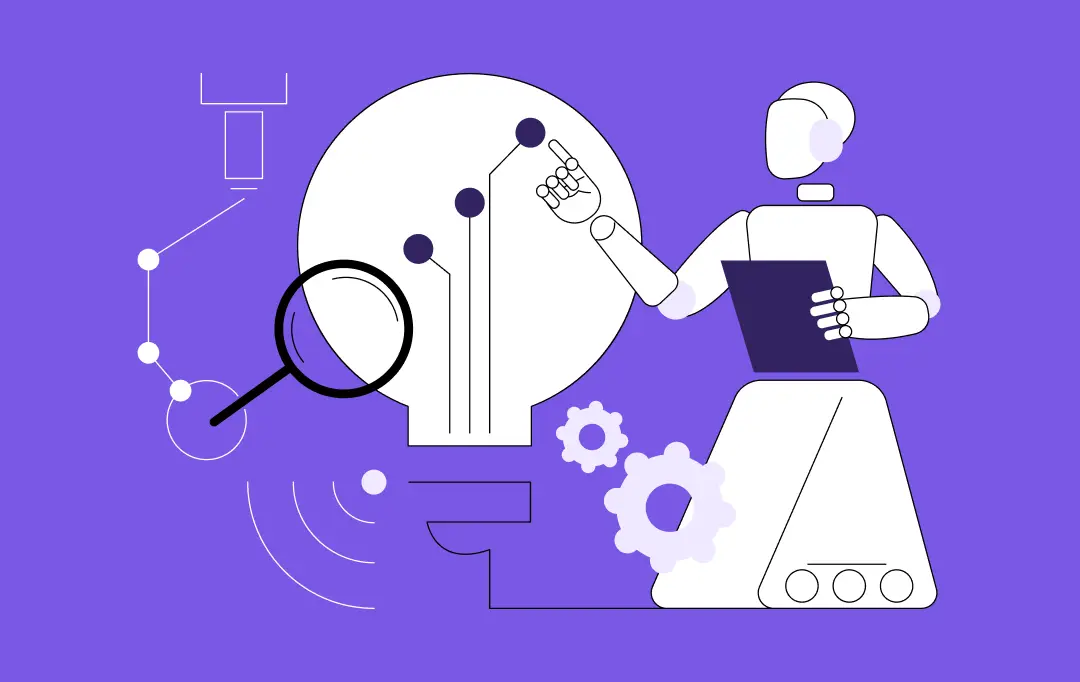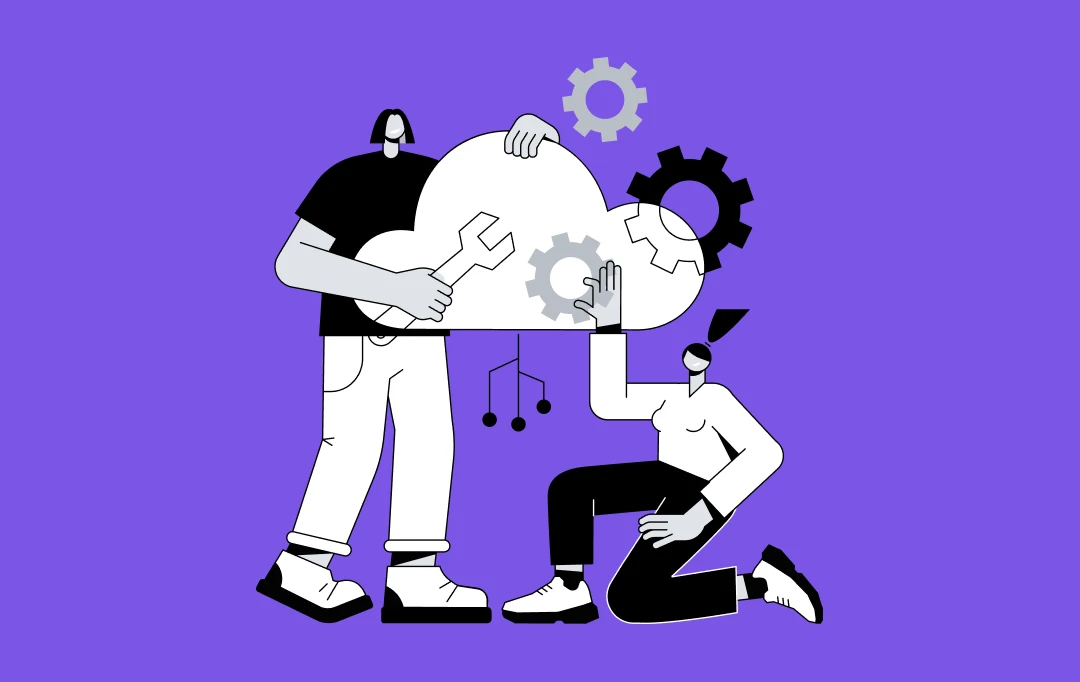Key takeaways:
- Legacy systems hinder innovation, security, and agility, making cloud migration a strategic imperative.
- A successful legacy to cloud migration hinges on careful planning, choosing the right strategy, and robust execution.
- Benefits of cloud migration for legacy systems include enhanced scalability, fortified security, and significant cost optimization.
- Industry-wide use cases demonstrate the transformative power of cloud application migration.
Let’s picture this: a decades-old ERP system that once seamlessly managed thousands of employees suddenly buckles under the pressure of remote work demands. Legacy databases that processed transactions smoothly for years begin failing when customer volumes spike unexpectedly. Monolithic applications that served businesses well in stable times become operational nightmares when agility and scalability become survival requirements.
This isn’t just imagination – it’s the reality many organizations discovered during the pandemic and continue facing today. Here, cloud migration solutions have emerged as the definitive solution, with the cloud migration service market projected to grow from $10.2 billion in 2023 to $29.2 billion by 2028, growing at a CAGR of 23.3% during the forecast period (Source: MarketsAndMarkets).
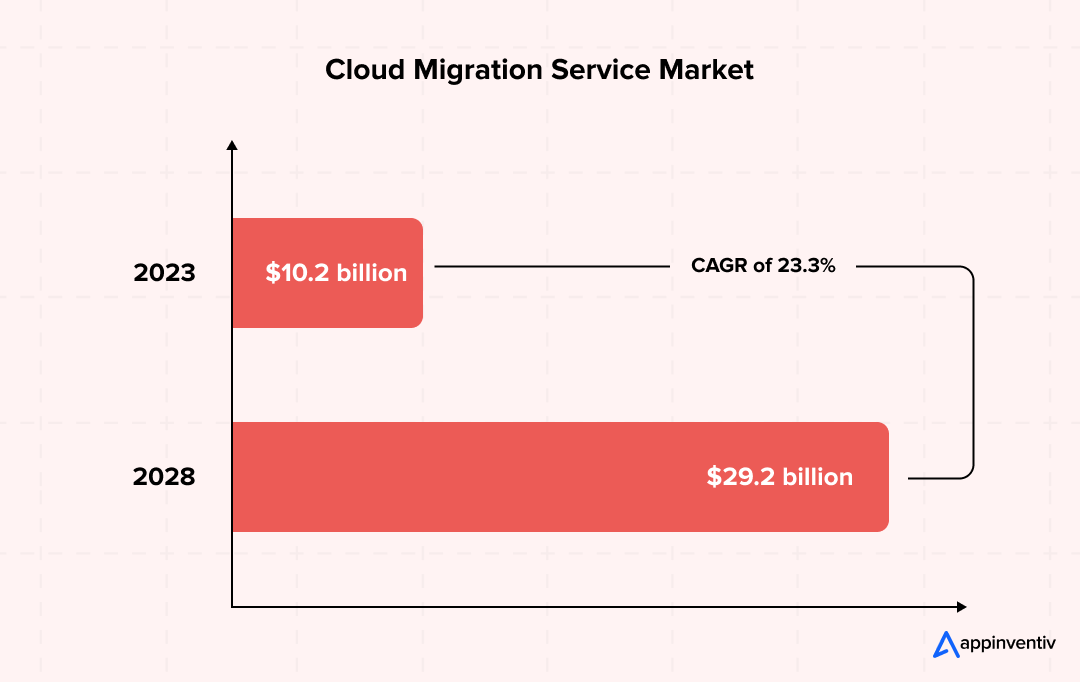
Across industries, organizations are confronting the harsh reality that legacy systems have become more liability than an asset. For example, at one fast-casual restaurant chain, online orders spiked from 50,000 to 400,000 per day during COVID-19 (Source: McKinsey). Their cloud infrastructure not only handled this 8x volume increase but also enabled them to accelerate their five-year migration plan to less than one year.
This exemplifies how adopting legacy to cloud migration strategies can unlock new efficiencies, security, and scalability that legacy systems simply cannot provide.
In this comprehensive blog, we’ll delve into the compelling “why” behind moving from legacy to cloud migration and provide a clear “how-to” roadmap for achieving a seamless and successful transition.
The Critical State of Legacy Systems: Why Act Now?
The modern business world demands agility, security, and scalability. Legacy systems, by their very nature, tend to lack these qualities. Companies that are not proactive in moving their legacy systems to the cloud will inevitably fall behind. Here are the main reasons why businesses must act now:
- Speed: Legacy systems can slow down operations. In healthcare, for example, slow data processing can delay diagnosis and treatment, ultimately impacting patient care.
- Security: Older systems often lack the necessary security measures to protect sensitive data from breaches, putting the business at risk.
- Scalability: Legacy systems were not designed to handle the vast amounts of data and transactions that modern businesses face today.
Key Issues Faced by Enterprises When They Don’t Modernize
Legacy systems tend to present several challenges for businesses that don’t act quickly to modernize:
- Inefficiency: These systems are often not integrated with other applications, leading to silos of information, duplication of effort, and an overall inefficiency in operations.
- Higher Maintenance Costs: The cost of maintaining legacy systems increases over time as they become more outdated, requiring specialized staff and expensive repairs.
- Limited Innovation: Companies stuck with legacy systems often struggle to innovate. Without modern technologies like AI and machine learning, they cannot drive the insights and automation required to stay ahead of the competition.
- Regulatory Risks: In industries like healthcare and finance, outdated systems can lead to non-compliance with changing regulations, putting companies at risk of fines and legal trouble.
Breaking Down the Cloud Migration Process: A Step-by-Step Guide
Embarking on legacy systems to cloud migration is a multifaceted journey, not a singular event. It requires meticulous planning, strategic decision-making, and expert execution. Here’s a detailed breakdown of the process:
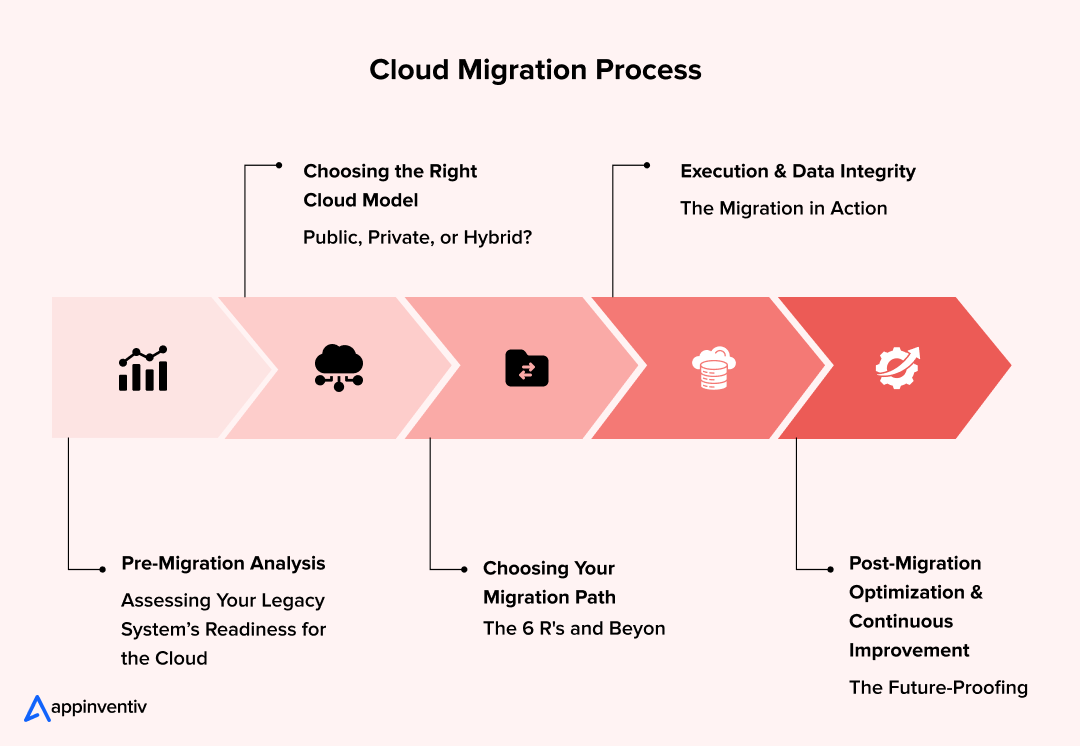
Pre-Migration Analysis: Assessing Your Legacy System’s Readiness for the Cloud
Before initiating any migration, businesses need to assess their legacy systems for cloud readiness. Key factors include:
- Compatibility: Does the legacy system support cloud technologies?
- Data Integrity: Ensuring the integrity of data during the migration process.
- Compliance: Does the system meet regulatory standards required in the cloud?
Choosing the Right Cloud Model: Public, Private, or Hybrid?
When moving legacy applications to the cloud, businesses need to select the appropriate cloud model:
- Public Cloud: A cost-effective solution for companies that need scalability but have no specific security or compliance requirements.
- Private Cloud: Ideal for businesses in regulated industries that require extra security and compliance measures.
- Hybrid Cloud: A combination of both public and private clouds, offering flexibility depending on the workload.
Choosing Your Migration Path (The 6 R’s and Beyond)
The 6 R’s of cloud migration help businesses select the best path for their legacy systems:
- Rehost: Lift and shift to the cloud without changes.
- Replatform: Move the application to the cloud with minor modifications.
- Repurchase: Replace the legacy system with a cloud-based solution.
- Refactor: Rebuild the application to fully leverage the cloud.
- Retire: Eliminate unnecessary applications.
- Retain: Keep certain legacy systems while migrating others.
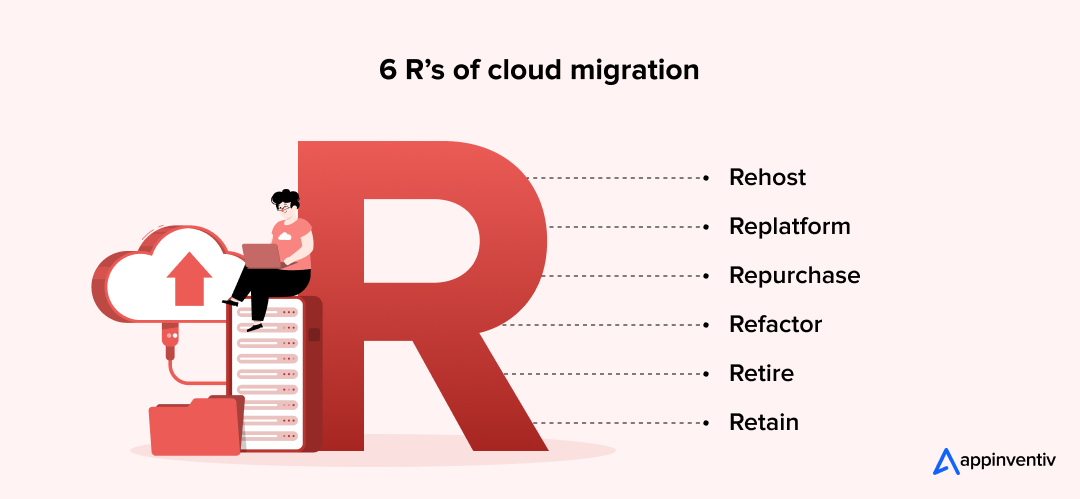
Execution & Data Integrity: The Migration in Action
Once the migration strategy is in place, businesses can begin the migration process. This phase requires careful planning and execution to ensure data integrity and minimal downtime.
- Key Technologies: Cloud migration tools like containers, microservices, and hybrid cloud platforms ensure that legacy applications run smoothly in a cloud environment.
- Data Integrity: A crucial part of the migration is ensuring data consistency and security. This is particularly important in industries like healthcare, where patient data must remain secure during migration.
Post-Migration Optimization & Continuous Improvement: The Future-Proofing
After the migration, it’s important to continuously optimize the system. This includes:
- Monitoring: Regularly check performance and security.
- Scaling: Adjust the cloud infrastructure as your business grows.
- Security Updates: Continuously apply patches to protect against vulnerabilities.
Cloud Migration Challenges: Overcoming Barriers and Pitfalls
While the benefits of cloud migration for legacy systems are clear, the path is not without its hurdles. Understanding and preparing for common challenges in migrating legacy systems to the cloud is crucial for success.
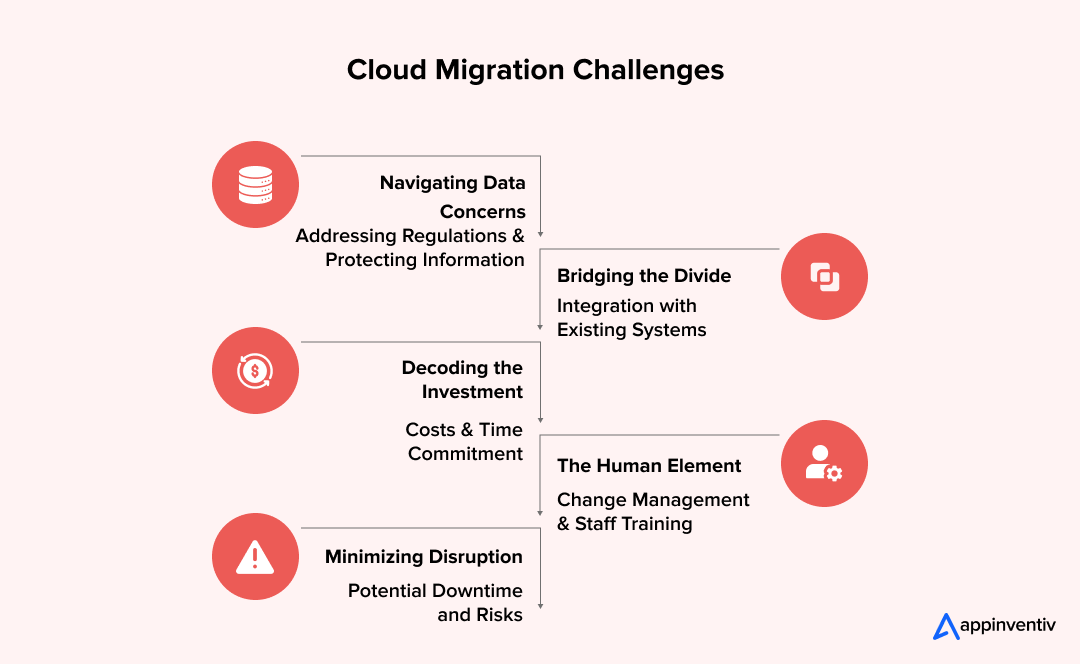
Challenge 1: Navigating Data Privacy and Security: Addressing Regulations & Protecting Information
The Problem: Moving sensitive data to the cloud raises concerns about security and compliance, such as GDPR or HIPAA. While cloud providers offer robust infrastructure, the responsibility for securing your data in the cloud remains shared, often leading to confusion and potential vulnerabilities if not properly managed.
The Solution: Meticulous planning is crucial. Implement strong encryption, leverage the cloud provider’s native security tools, and ensure continuous compliance checks. Partnering with cloud migration services experts can help you design a secure framework that often exceeds on-premise capabilities.
Challenge 2: Bridging the Divide: Integration with Existing Systems
The Problem: Most businesses will run a hybrid environment for years, mixing on-premise legacy systems with new cloud applications. This creates a significant challenge in getting these disparate systems to communicate seamlessly, leading to data silos and operational inefficiencies.
The Solution: Develop robust APIs and utilize middleware solutions to act as digital translators. This strategic integration planning ensures smooth data exchange and unified operations across your mixed IT landscape.
Challenge 3: Decoding the Investment: Costs and Time Commitment
The Problem: Despite promising long-term savings, a legacy to cloud migration demands substantial upfront costs and time. This includes re-architecting applications, complex data migration, and retraining staff, making accurate cost estimation a critical, often underestimated, challenge.
The Solution: Conduct a detailed Total Cost of Ownership (TCO) analysis, comparing current expenses with projected cloud costs, including all transitional outlays. Embrace phased migrations to spread costs and continually optimize cloud spending post-migration for long-term ROI.
Challenge 4: The Human Element: Change Management and Staff Training
The Problem: Resistance to change from employees and skill gaps within IT teams can significantly hinder legacy systems to cloud migration. The human aspect, if not managed proactively, can derail even the most technically sound migration plan, leading to frustration and slow adoption.
The Solution: Invest in comprehensive training to upskill your teams in cloud technologies. Clear, consistent communication about the benefits of cloud-based transformation of legacy systems helps foster a cloud-first culture, ensuring your workforce embraces the new environment.
Challenge 5: Minimizing Disruption: Potential Downtime and Risks
The Problem: The fear of operational disruption during migrating legacy applications to the cloud is a major concern. Potential downtime, data corruption, and unforeseen issues can lead to financial losses and reputational damage if not carefully managed.
The Solution: Plan phased migrations to avoid a “big bang” approach, starting with less critical systems. Implement rigorous testing at every stage and always have a comprehensive rollback strategy to mitigate risks and ensure business continuity during Cloud Application Migration.
Checklist to Migrate Legacy Applications to Cloud
To ensure a structured and successful legacy application migration to clouds, follow this essential checklist:
- Define clear migration objectives and KPIs. What are you trying to achieve?
- Conduct a thorough application and infrastructure assessment. Know your starting point.
- Identify application dependencies and interconnections. Avoid surprises.
- Choose the appropriate cloud migration strategy (Rehost, Replatform, Refactor, etc.) for each application. One size does not fit all.
- Select the right cloud provider and service model. Research and align with needs.
- Develop a detailed data migration plan. Ensure data integrity.
- Implement robust security measures (encryption, IAM, network security). Security first.
- Ensure compliance with all relevant industry regulations. Stay legal and protected.
- Plan for seamless integration with existing systems. Enable interoperability.
- Establish a comprehensive testing strategy (functional, performance, security). Verify before deployment.
- Prepare a rollback plan in case of issues. Always have a backup.
- Train staff and manage organizational change effectively. Empower your team.
- Set up continuous monitoring and optimization processes. Maintain performance and cost efficiency.
- Define clear cost management strategies for the cloud environment. Avoid bill shock.
Unlocking Business Potential: The Irrefutable Benefits of Cloud Migration
The effort invested in cloud application migration yields significant returns, redefining how businesses operate and innovate. The benefits of cloud migration for legacy systems are far-reaching and impactful.
Improved Operational Efficiency
By moving to the cloud, businesses can automate routine IT tasks, reduce manual interventions, and streamline workflows. Cloud platforms offer managed services that handle infrastructure maintenance, allowing IT teams to focus on strategic initiatives rather than firefighting. This often leads to significant productivity gains and faster time-to-market for new features and services.
Enhanced Security and Compliance
Modern cloud environments are built with security at their core. Leading cloud providers invest billions in cybersecurity, offering real-time threat detection, automated security updates, advanced encryption, and robust identity and access management (IAM) solutions.
This often surpasses the security capabilities of individual on-premise data centers. Moreover, cloud providers offer services and certifications that help businesses meet stringent regulatory requirements like GDPR, HIPAA (for healthcare, as an example), or PCI DSS, simplifying compliance burdens.
Increased Collaboration and Remote Capabilities
Cloud-based platforms inherently foster collaboration by providing centralized access to data and applications from anywhere, on any device. This enables seamless teamwork, supports remote work models, and empowers globally distributed teams to work efficiently, which has become crucial for business continuity and talent attraction in the post-pandemic world.
Cost Optimization and ROI Analysis
One of the most compelling reasons for cloud migration is the potential for significant cost savings. By shifting from capital expenditures (CapEx) on hardware to operational expenditures (OpEx) on cloud services, businesses can achieve more predictable and often lower IT costs. Cloud’s pay-as-you-go model eliminates the need for expensive upfront investments in servers, storage, and cooling.
Cloud Migration in Action: Industry-Specific Use Cases
The power of legacy to cloud transformation is best illustrated through its real-world impact across diverse industries:
Healthcare
Migrating patient data and healthcare apps to the cloud revolutionizes patient care. Cloud-based Electronic Health Records (EHRs) improve accessibility for medical professionals, enabling seamless data sharing and better-informed diagnoses. Telemedicine platforms hosted on the cloud scale effortlessly to meet fluctuating patient demand.
For instance, many hospitals have leveraged cloud solutions for legacy system modernization to secure patient data, improve interoperability, and enable AI-driven diagnostics, leading to better patient outcomes and operational efficiencies.
Also Read: A Guide to Modernizing Legacy Systems in Healthcare
Finance
In the financial sector, cloud application migration enhances data analytics capabilities, crucial for fraud detection, risk management, and personalized financial services. Cloud’s scalability supports high-volume transaction processing during peak times, while its robust security features ensure compliance with strict financial regulations. A major investment bank might use cloud to analyze vast datasets for market trends or to scale their trading platforms globally, offering a superior customer experience.
Retail & E-commerce
Cloud solutions are pivotal for improving customer personalization and supply chain efficiency. Retailers can leverage cloud-based analytics to understand customer behavior, power recommendation engines, and manage inventory across multiple channels in real-time. For example, a leading e-commerce platform utilized legacy systems to cloud migration to handle massive traffic spikes during sales events, reduce website latency, and integrate AI for hyper-personalized shopping experiences.
Manufacturing
Modernizing legacy systems with cloud in manufacturing enables IoT integration and real-time data processing from sensors on factory floors. This allows for predictive maintenance, optimizing production lines, and improving quality control. A car manufacturer might deploy cloud-based transformation of legacy systems to gather data from robotic assembly lines, analyze it in real-time, and identify potential failures before they occur, significantly reducing downtime and costs.
The Future of Legacy Systems and Cloud Migration
The trajectory of cloud migration points to an increasingly cloud-native future for businesses. As cloud technologies continue to evolve, driven by advancements in machine learning (ML), artificial intelligence (AI) for legacy modernization, and the widespread adoption of edge computing, remaining reliant on outdated legacy infrastructure will increasingly become a significant competitive disadvantage.
Businesses that embrace legacy to cloud transformation are not just upgrading their IT; they are fundamentally reshaping their capacity for innovation, agility, and resilience in a rapidly changing world. The ability to seamlessly integrate emerging technologies, such as quantum computing and advanced blockchain solutions, will depend entirely on having a flexible and scalable cloud foundation. This strategic shift is no longer a matter of if, but when.
Appinventiv: Your Tech Partner in Transforming Legacy Systems to Cloud
The journey from entrenched legacy systems to cloud migration is more than just a technical upgrade; it’s a strategic imperative for any business aiming to thrive in today’s dynamic digital landscape. This transformative shift, however, is not a path to be walked alone. It requires deep technical acumen, a nuanced understanding of various industries, and a meticulous approach to planning and execution.
At Appinventiv, we recognize these complexities and stand as a seasoned partner, guiding businesses through their legacy to cloud transformation with proven expertise. We don’t just move your data to the cloud; we strategically modernize your operations, ensuring security, optimizing performance, and maximizing your return on investment.
Our team of 1600+ tech experts works closely with clients, providing end-to-end cloud migration services, from initial assessment and strategy development to post-migration optimization. We ensure that the migration process is seamless, with minimal disruption to your day-to-day operations. Our deep understanding of cloud-based solutions allows us to address industry-specific challenges, making us a trusted partner in driving business efficiency, security, and scalability.
Whether you’re looking to improve operational agility, reduce costs, or future-proof your organization, we ensure your transition is seamless, secure, and truly meets your needs and future-proofs your business.
In short and straight terms, the journey of migrating legacy applications to the cloud can seem daunting, but with the right strategy and a trusted partner, it becomes a clear path to unprecedented growth.
So, now the answers are evident: Why migrate from Legacy to Cloud? Because your competitors are, your customers demand it, and your future depends on it. How to move from Legacy to Cloud? By choosing a trusted tech partner who understands your vision and possesses the expertise to execute it flawlessly.
Take the decisive step towards a cloud-powered future today.
FAQs
Q. Why migrate from Legacy to Cloud?
A. Migrating from legacy to cloud systems is essential for businesses to overcome limitations like poor scalability, high maintenance costs, security vulnerabilities, and slow innovation. Cloud migration enables increased agility, better data accessibility, enhanced security, and significant cost optimization, positioning businesses for future growth and competitiveness.
Q. What is the process for migrating legacy applications to the cloud?
A. The process typically involves several stages: a comprehensive pre-migration assessment and strategic planning, choosing the right cloud model (public, private, or hybrid), selecting an appropriate migration strategy (e.g., rehosting, replatforming, refactoring), executing the data and application migration, and finally, post-migration optimization and continuous monitoring.
Q. What are the different strategies for migrating legacy applications to the cloud?
A. Common strategies, often referred to as the “6 Rs,” include Rehosting (lift and shift with minimal changes), Replatforming (lift and optimize with minor cloud-native adjustments), Refactoring/Re-architecting (rebuilding applications for full cloud-native benefits), Repurchasing (replacing with SaaS solutions), Retaining (keeping some systems on-premises), and Retiring (decommissioning unnecessary systems).
Q. How do we accurately estimate the total cost of cloud migration?
A. Accurately estimating costs involves analyzing current legacy system expenses (hardware, maintenance, energy, staffing), projecting cloud infrastructure costs (compute, storage, network), accounting for data transfer fees, considering application refactoring or development costs, and factoring in workforce training and potential post-migration optimization services.
Q. How do we assess our legacy applications for cloud readiness?
A. Assessing cloud readiness involves a thorough analysis of your application portfolio, including understanding dependencies, identifying performance bottlenecks, evaluating data volumes and sensitivity, assessing security requirements, and determining compliance needs. This helps in categorizing applications based on their suitability for different cloud migration strategies.
Q. What tools and expertise are required for a successful migration?
A. A successful migration requires a blend of technical tools (e.g., containerization platforms like Kubernetes, microservices frameworks, automation tools, data migration utilities, and hybrid cloud platforms) and human expertise (cloud architects, DevOps engineers, security specialists, project managers, and change management consultants). This combination ensures both technical execution and organizational readiness.
Q. How do we assess our legacy applications for cloud readiness?
A. Assessing legacy applications for cloud readiness involves a thorough analysis of their architecture, dependencies, performance characteristics, data sensitivity, and compliance requirements. This assessment helps determine which migration strategy is most suitable (e.g., rehost, replatform, refactor) and identifies potential challenges or prerequisites for a smooth transition.
IT Managed & Outsourcing
Didn't find what you're looking for? Let us know your needs, and we'll tailor a solution just for you.
